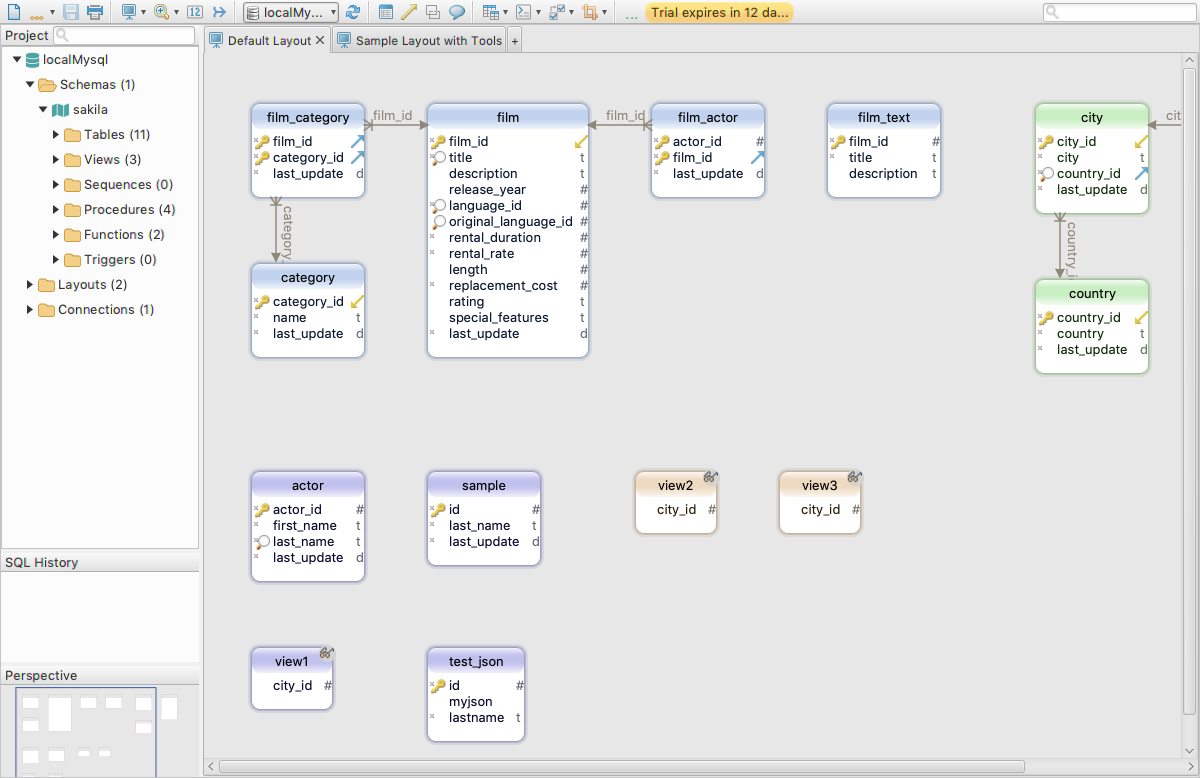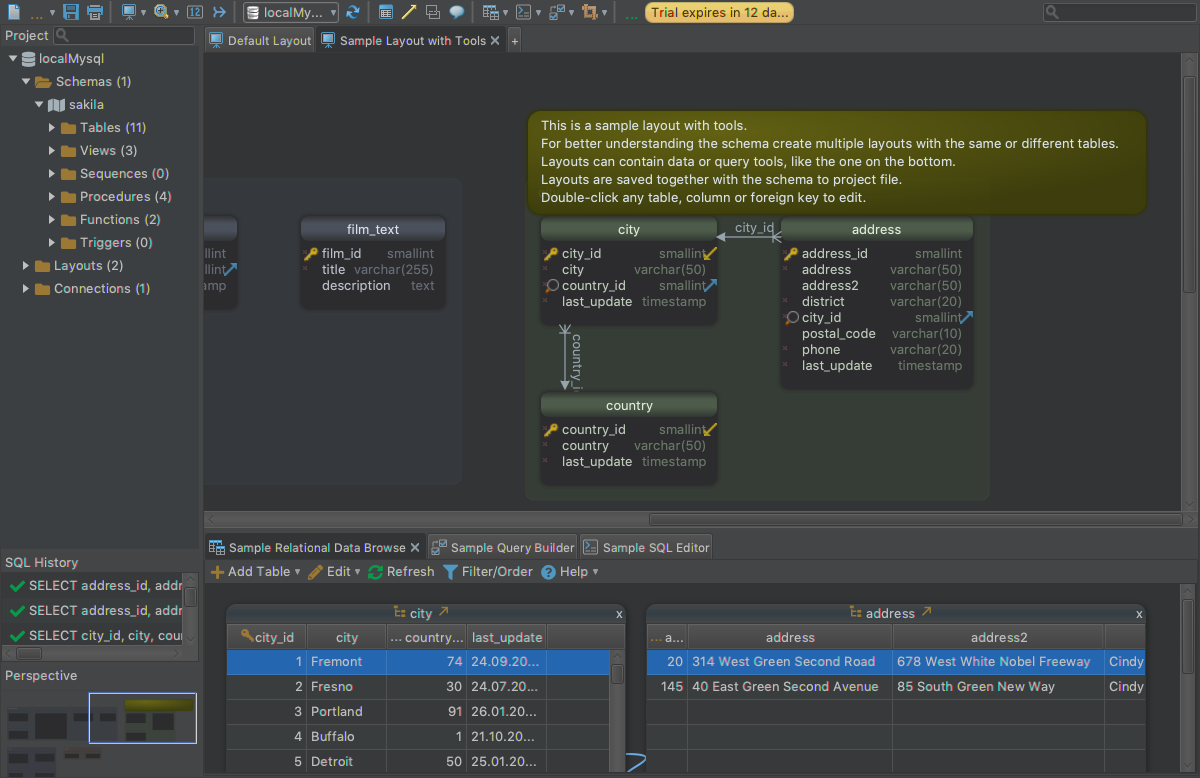

- #Compare databases using dbschema update
- #Compare databases using dbschema full
- #Compare databases using dbschema code
We are following that procedure, there is no doubt that. I just made generic statement, Generally we used develop from dev and we will push it to QA and then production.
#Compare databases using dbschema code
I will suggest you to make the changes first in dev then push the code to QA. One your employee table previous has employeeId as text column data type but now you have change it integer but in your prod/qa employee table have employeeid with some characters values which is not integer then you will definitely face the issue or you need to clear the old information first. In Outsystems all, the standard db rules are applicable. yes you can change the constraint but again if you already have data in that table which do not follow that constraint then definitely, you will face the issues. for your above queries:ġ.New column added to the existing table,- yes you can addĢ.Modifying the constraints to the existing table- yes but keep in mind, if data is already exist in the same table may not have conflict with it.ģ.Adding new table to existing table.- yes you can add new table.Ĥ.Modifying the constraints to existing column in the table. Use the comparison options such as case insensitivity, ignore constraints and 30 other options, for that.Usually these changes start from development environment not from QA. You can control what is compared and what is seen as a difference.
#Compare databases using dbschema full
Columns marked with an X indicate that the function can be pushed to the Databricks Delta database by using full pushdown optimization. Mapping schemas enables you to compare database objects that belong to the same or different schemas. The following table summarizes the availability of pushdown functions in an Databricks Delta database. DataGrip is a full-featured IDE for working with databases and SQL.

Schemas also contain other kinds of named objects, including data types, functions. SQL script to database schema comparison.Ĭonnect to a databases and select a SQL script representing a database and compare the objects in both sources. Much more powerful than its counterparts. A database contains one or more named schemas, which in turn contain tables.Database schema to database schema comparison.Ĭonnect to two databases and compare the objects in those databases.For the synchronization, database specific synchronization scripts/routines are generated.įor comparing and synchronizing database contents, check out Datanamic SchemaDiff's companion product, Datanamic DataDiff.

For each supported database, database specific comparison routines are used. The tool uses native connections to Oracle, MS SQL Server, MySQL, MS Access, Interbase, Firebird, SQLite and PostgreSQL.
#Compare databases using dbschema update
Once your databases are compared, you can view the differences and generate the necessary (database specific) synchronization script to update the destination database and make it identical to the source database. You can compare and synchronize Oracle, MySQL, MS Access, MS SQL Server, InterBase, Firebird and PostgreSQL database schemas.ĭatanamic SchemaDiff will give you the full picture of all database differences.

It allows you to compare and synchronize tables, views, functions, sequences (generators), stored procedures, triggers and constraints between two databases. Intelligent mapping of (renamed) database objectsĭatanamic SchemaDiff is a tool for comparison and synchronization of database schemas. To help with this administration task, MySQL Workbench includes schema synchronization and comparison utilities.The DbSchema model can be created by reverse engineering schema. Visualize the differences between database schemas DbSchema uses its own model with a copy of the schema structure, separate from the database.Compare and synchronize database schemas.


 0 kommentar(er)
0 kommentar(er)
